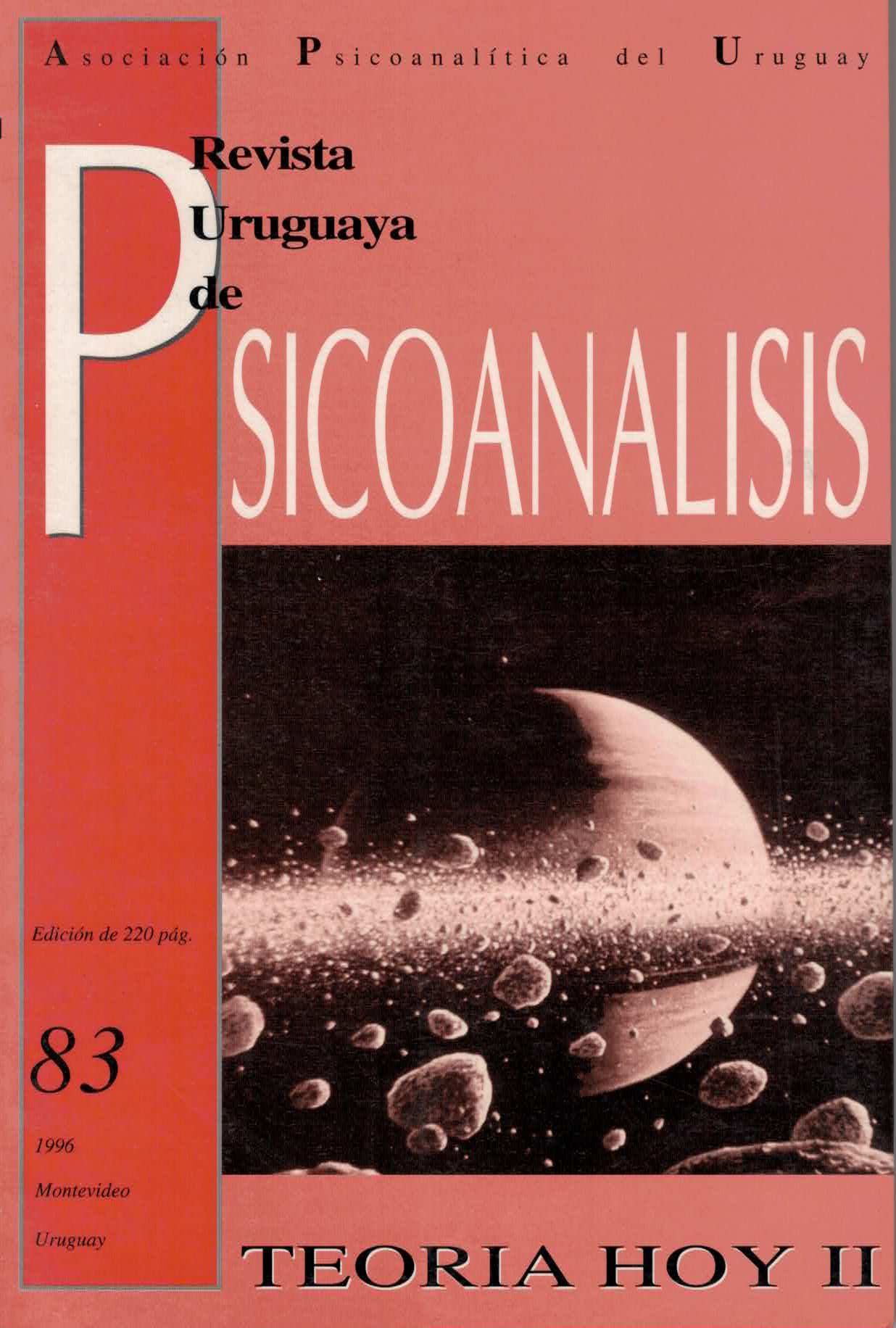Conference on psychic structuring
Keywords:
aparato psíquico, huella mnémica, represión primaria, representación, inconsciente, método psicoanal´´itico, estructuración psíquicaAbstract
Face to a situation which has produced the fall of the omnipotent position which attempted to solve all suffering through psychoanalysis, the author, from her working perspective, proposes to advance in the idea of recovering theoretical-clinical fertility of psychoanalysis with a view to the XXIst century, in a movement of passage which might be considered as that of the passage “from alchemy to chemistry”. Correspondingly, there must be increasing awareness of the fact that the Freudian
oeuvre is inevitably full of contradiction, and that in it remains an anlage of the thought of the time in which it was gestated, with both its good and bad judgments on the one hand, and also most precious contents transcending their original scientific and
ideological formations. A recovery of psychic structuring times as non-linear, rather as movement fated to
après coup in the process of the topographic constitution, leaves open the question regarding a genesis which cannot be thought of as a linear course or radical ahistoricism. In the interplay opened between the initial oedipal structure, where each of
the initial protagonists father and mother is pierced by repression and is a subject of the unconscious, it is necessary to redefine the father’s function in the terms posed some time ago already by structuralism. Thus, the mother’s function must be broken down
into its pulsating and narcissising character, and that of the father redefined in its structuring and lethal aspects: paternal rivalry, an essential constitutive element of the prohibition, cannot be avoided in the categorical imperative which installs castration,
but which always preserves the hypothetical dimension due to the fact the father is pierced by his own unconscious phantasms.
These are not simply theoretical matters: they also have clinical con-sequences, as when the unconscious is construed as funded by primal repression and articulated in its relationships with the secondary psychic mechanisms, the question. When is it possible
to analyze? That acquires a specific metapsychological dimension for the analysis of both children and adults. The psychic constitution mechanisms obtain a dynamics, proper to them during the period of subjective constitution, through the difference posed between initial oedipal structure and metabolical and singular modes. And it is from this singularity that the curing process is determined. From it, likewise, derives the definition of the modes psychoanalysis operates in extension: interventions which
attempt to undo pathogenic knots produced during infancy and which also include clinical actions in the interventions articulating the child’s intersubjective structural relationships.The analyst’s capacity lies in the metapsychological fencing of these variables, both those pertaining to infancy and to specific moments in clinical work with adults, which require theoretical and clinical redefinition. This implies an approach encouraging us towards more and more subtle elaborations of our theoretical instruments impinging on practice, and even to update our working hypotheses



 This work is licensed under a
This work is licensed under a 